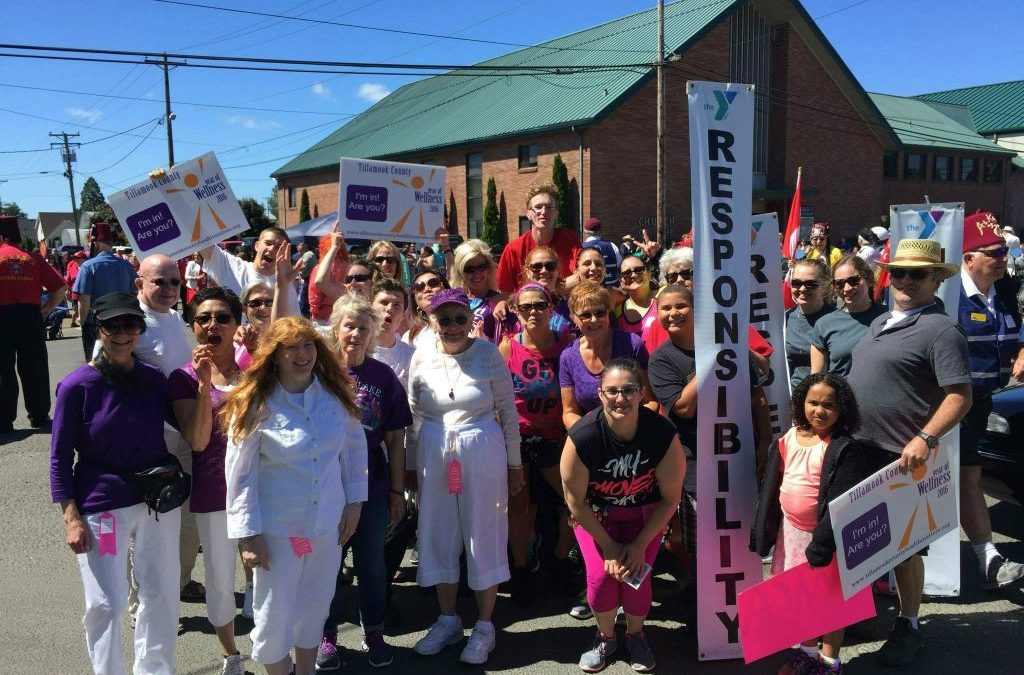Jessica Linnell, PhD, Oregon State University Extension Service, Family & Community Health
When I first moved to Tillamook two years ago to join the Oregon State University Extension Service as a professor in Family & Community Health, I started hearing something repeatedly from everyone I met, “We have culture of working together,” and there were many examples.
One of these stories came from my neighbor who told me about the flood in 1996. While he shared with me the details of how devastating the flood was, his focus was not on what happened but rather on how people came together to help one other.
Since the very beginning of my time living in Tillamook County, I have understood that no matter how big or complex a problem is, the people of Tillamook County will work together. In addition to the crises like floods that bring us together, we have some big, complex health issues in Tillamook County that also require the spirit of collaboration.
If you look at the latest health assessments of our county, chronic diseases dominate the top of the list. One of these is the alarming rise in type 2 diabetes. Recent estimates show that nearly 11 percent of Tillamook County residents are diagnosed with diabetes, which is more than the state average. Additionally, up to 25% are estimated to have prediabetes. This is why type 2 diabetes was selected as the priority health issue for the next phase of the Year of Wellness.
Addressing type 2 diabetes is going to require we all work together to create communities that empower healthy lifestyles. That is why we have integrated a model called Collective Impact to support this work. The Collective Impact model encourages organizations to move from isolated work to working together collaboratively, by creating a common agenda and sharing resources, materials, time, risks, benefits and rewards.
When businesses, organizations, and community members come together around one problem, they maximize their expertise and resources to create solutions that are effective, tailored to the community, and can be sustained over time.
To help illustrate how collective impact can be a useful approach in efforts like the Year of Wellness, I would like to share this quote from Community Tool Box, a resource from the University of Kansas.
“Not all problems are created equal – some are simple, some are more complicated, and some are truly complex. Each type requires a somewhat different approach to solving them.
- An example of a simple problem is learning how to bake a cake – the right “recipe” is essential, but once you’ve discovered it, replication will get you almost the same result every time.
- An example of a complicated problem is sending a rocket to the moon – the right “protocols and formulas” are needed, as are high levels of expertise and training. Experience is built over time to get to the right result, which can then be repeated over time with the expectation of success.
- An example of a complex problem is raising a child – there are no “right” recipes or protocols that work in every situation. There are many outside factors that influence the situation, and every situation is unique. Experience helps, but in no way guarantees success.
A single service program may be quite appropriate to addressing problems that are simple or only somewhat complicated. Collective impact, however, is an approach to solving complex social problems.”
The myriad factors that influence our risk for type 2 diabetes are the reason type 2 diabetes is a big and complex health issue. Our risk is not just related to what we eat and how much we exercise. It is also influenced by factors like our family history, access to health services, and family and social norms. Additionally, our physical environment as well as organizational and government policies can have a big impact on our ability to engage in healthy lifestyles. By harnessing our collaborative spirit, we will be able to maximize our potential to have collective impact on type 2 diabetes.

